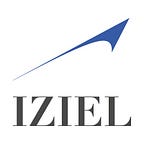A Guide to QMS Documentation for Medical Devices
In the realm of medical device manufacturing, ensuring product quality and compliance with regulatory standards is paramount. A robust Quality Management System (QMS) is the cornerstone of this endeavor, providing a structured framework for managing processes, documentation, and continuous improvement. This blog aims to delve into the essentials of QMS documentation for medical devices, shedding light on key components, regulatory requirements, and the pivotal role it plays in ensuring product safety and efficacy.
Understanding QMS Documentation:
A Quality Management System is a structured framework designed to manage and enhance the quality of products or services. In the context of medical devices, a QMS is not only a regulatory requirement but also a crucial tool for ensuring that devices meet the highest standards of safety and performance.
Key Components of QMS Documentation:
1. Quality Policy and Objectives:
- Begin with a clear and concise quality policy that outlines the organization’s commitment to quality.
- Define measurable objectives that align with regulatory requirements and the organization’s mission.
2. Organizational Structure and Responsibilities:
- Document the organizational structure, including roles, responsibilities, and reporting relationships.
- Clearly define roles related to quality, such as the Quality Management Representative and the Regulatory Affairs team.
3. Quality Manual:
- Develop a Quality Manual that serves as the cornerstone of the QMS documentation.
- Outline the scope of the QMS, the processes it encompasses, and how the organization meets regulatory requirements.
4. Documented Procedures:
- Detail the procedures for key QMS processes, including design controls, risk management, production, and post-market surveillance.
- Ensure that procedures are clear, accessible, and consistently followed across the organization.
5. Records Management:
- Establish a systematic approach to document control, ensuring that all relevant documents are appropriately identified, reviewed, and updated.
- Implement a records management system for the retention and retrieval of critical documentation.
6. Risk Management:
- Document the risk management process, as per ISO 14971 standards.
- Clearly articulate how risks are identified, assessed, and mitigated throughout the product lifecycle.
7. Change Control:
- Develop a robust change control procedure to manage changes to processes, procedures, or the product itself.
- Ensure that changes are thoroughly evaluated, documented, and implemented without compromising product quality.
Regulatory Considerations:
1. ISO 13485:
- Align QMS documentation with ISO 13485, the international standard for quality management in the design and manufacturing of medical devices.
- Regularly update documentation to comply with the latest revisions of ISO 13485.
2. FDA QSR (Quality System Regulation):
- Ensure that QMS documentation aligns with the requirements of the FDA’s Quality System Regulation, especially for devices intended for the U.S. market.
3. CE Marking (Europe):
- For devices marketed in Europe, adhere to the QMS requirements outlined in the Medical Device Regulation (MDR) or In Vitro Diagnostic Regulation (IVDR).
Benefits of Effective QMS Documentation:
1. Compliance:
- Facilitates compliance with regulatory requirements, reducing the risk of regulatory issues or product recalls.
2. Consistency:
- Ensures consistency in processes and procedures, leading to a more predictable and reliable product outcome.
3. Continuous Improvement:
- Provides a foundation for continuous improvement by allowing organizations to identify areas for enhancement and implement corrective and preventive actions.
4. Risk Mitigation:
- Helps identify and mitigate risks associated with the design, manufacturing, and distribution of medical devices.
QMS documentation is not just a regulatory necessity; it is a fundamental tool for ensuring the safety, efficacy, and quality of medical devices. By establishing a well-structured QMS and maintaining thorough documentation, organizations not only meet regulatory expectations but also cultivate a culture of excellence, setting the stage for continued innovation and the delivery of safe and effective medical devices to the global market.
